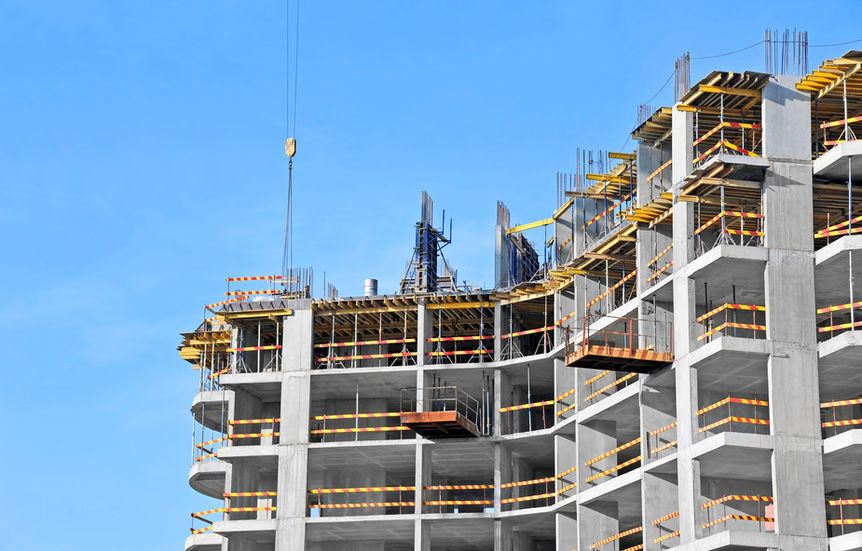Inter-floor leakage is the second most popular complaint received by the Tribunal of Strata Management in Malaysia. Water leakage is exacerbated in strata-titled buildings because the owner of the parcel from which the leakage originates might not wilfully cause and suffer from the said leakage.
Inter-floor leakage is defined as “any evidence of dampness, moisture or water penetration in the ceiling and/or any furnishing materials attached to the ceiling that form parts of the interior of a parcel, common property or limited common property”.
Luckily, the Ministry of Housing and Local Government (KPKT) has included a clause within the Strata Management Act 2013 to address inter-floor leakage, a rising problem in strata buildings across Malaysia. Building managers and neighbours who do not cooperate in investigations and rectification may be subject to punitive actions including a fine of RM50,000.00 and/or 3 years imprisonment upon conviction.
This regulation offers some respite to frustrated house owners suffering from water leakage and elevated moisture within their units. Let’s take a look at frequently asked questions on inter-floor leakage or water damage:
Inter-Floor Leakages – Who should pay the price?
For owners of primary properties, it should be noted that any defects occurring within the Defect Liability Period (DLP) or within 24 months upon vacant possession, falls under the developer’s responsibility. Upon a DLP complaint, the developer should send their contractors/repairmen to patch up the water defects.
For owners of older properties or subsale homes, the owner of the upper floor shall be responsible for said leakage in the absence of proof to the contrary. This means that the owner of the upper unit will have to foot the bill for repair works.
You must be thinking, how do you go about convincing your neighbour that the water leakage in your unit is their fault? Fortunately, for strata property owners the Strata Management Maintenance and Management Regulations 2015 (SMR 2015) has prescribed a standard operating procedure (SOP) in handling water leakage among strata parcels.
Procedure for dealing with inter-floor leakage in strata buildings
When the parcel owner or management notices signs of dampness, moisture and water penetration on the ceilings of common properties, limited common properties or partywall, a complaint should be made to the building manager. Subsequently, the manager should carry out an inspection as soon as possible or within seven (7) days. He should inspect the complainant’s parcel and consider the following factors:
Legal presumption of water travelling from top to bottom due to gravity.
Any defect in utilities that serve one (1) unit is the defect of the parcel owner.
Any defect which occurs during the DLP falls under the developer’s responsibility.
Any defect in the utilities that serve more than one (1) unit is actually a defect of the building’s common property and shall be repaired by the management.
If the building manager discovers that the leaking utility does not belong to the complainant, he shall serve a 7-day written notice to the upstairs neighbour for a joint inspection. Denial of access for inspection and rectification work by said neighbour is an offence and may, upon conviction, be liable to a fine of less than RM50,000 or imprisonment of less than three (3) years, or both.
In the case of an emergency where the water leakage may materially cause risk of flooding to other residents and buildings, forcible entry may be effected. However, more witnesses are necessary during the entry to prevent any risk of trespassing and theft during the urgent inspection and rectification work.
In a non-emergency situation, the normal SOP should be followed:
Step 1: The building manager shall issue a Certificate of Inspection (Form 28) within seven (7) days to the complainant and relevant owner, stating the cause of leakage and whether the parcel owner or management is liable for rectifying the leakage.
Step 2: A duplicate copy of Form 28 shall be forwarded to the Commissioner of Buildings (COB) for reference.
Step 3: If the relevant parcel owner fails to trigger the rectification work within seven (7) days, the management shall forthwith rectify the leakage and charge the owner accordingly. Failure to repay the expenses incurred may lead to a case of default.
What can I do if the strata parcel owner refuses to rectify the water damage?
Should there be any dispute to Form 28 or any refusal by the party liable in the rectification of the water leakage, the case can be referred to the COB for dispute resolution. The COB may appoint a registered architect, engineer, quantity surveyor or building surveyor to assist in the case. The cost involved shall be borne by the party liable for the rectification of leakage (culprit parcel owner).
Who should repair the damaged ceiling or finishing in the affected strata unit?
The rectification work for inter-floor leakage includes consequential damages and costs will be borne by the culprit parcel owner.
Can water supply be terminated by the Management?
Why you should take inter-floor leakage seriously?
Adverse health impact for residents
The adverse impact of inter-floor leakage includes biological contamination and accelerated degradation of building materials and structures. It has been scientifically proven by the Institute of Medicine (USA), Centre of Disease Control and Prevention (USA) and World Health Organisation that dampness is associated with poor hygiene, indoor air quality and infestation of mould.
Mould is 100 to 500 time bigger than bacteria and represents the presence of biological contamination – imagine a battalion of bacteria, viruses, protozoa, bugs and other microorganisms. These pathogens and their spores actually exist in small quantities within our natural habitats, but our immune system is capable of protecting us accordingly.
The problem is that dampness triggers their germination and growth. Fragments, mycotoxin and microbial volatile organic compounds released by these pathogens during their combat with other microorganisms for food are poisonous and detrimental to our health. When visible mould is spotted, mould remediation exercise including moisture detection, rectification and sanitisation is necessary for the health and well-being of residents.
Secondary damage to building
Water has molecules with 2 hydroxyl radicals (free electrons), readily combines with other molecules and oxidises them accordingly. Excessive dampness and water can lead to accelerated degradation of building materials, i.e. irreversible expansion on organic compound and corrosion to metallic materials.
Prolonged exposure of concrete structures to dampness can lead to disintegration and cracking via the carbonation process. The high alkalinity of concrete at pH 13 to 14 causes formation of protective film that protects the reinforcing steel bars (rebars) against corrosion. When rain water dissolves carbon dioxide gas, carbonic acid is formed.
The acidity of rain water can neutralise concrete and bring down its pH value. When its pH reaches 9, the protective film on concrete is broken and corrosion is triggered. Rebars (i.e metal bars that are used to provide additional support to concrete structures) will go through oxidation leading to volumetric expansion of up to 6.5 times when the rebars are fully corroded or oxidised.
This process cracks the concrete from within and materially reduces the strength and integrity of a building’s structure. The corrosion process will be accelerated and exacerbated in the presence of chloride ions from sea or swimming pool water.
Basically, dampness accelerates the ageing of a building while causing a host of other problems such as deterioration of plaster/wallpaper and cracks in partywalls and ceilings!
At the end of the day, inter-floor leakage is not just an individual unit owner’s problem. It should be looked into by building managers or the management committee too. A preventive maintenance mindset should be adopted and the strata management committee must arrange for scheduled inspections. This is necessary to minimise the possibility of damages caused by water leaking before it causes catastrophic damage that may not only cause building decay but also biological contamination.
@ https://www.iproperty.com.my/





















































































![[UPDATED] Real Property Gains Tax (RPGT) Act 2021 in Malaysia](https://static.wixstatic.com/media/42661b067ebe4806a785cab2668ede60.jpg/v1/fill/w_327,h_250,fp_0.50_0.50,q_30,blur_30,enc_avif,quality_auto/42661b067ebe4806a785cab2668ede60.webp)
![[UPDATED] Real Property Gains Tax (RPGT) Act 2021 in Malaysia](https://static.wixstatic.com/media/42661b067ebe4806a785cab2668ede60.jpg/v1/fill/w_326,h_249,fp_0.50_0.50,q_90,enc_avif,quality_auto/42661b067ebe4806a785cab2668ede60.webp)







































































































































Comments